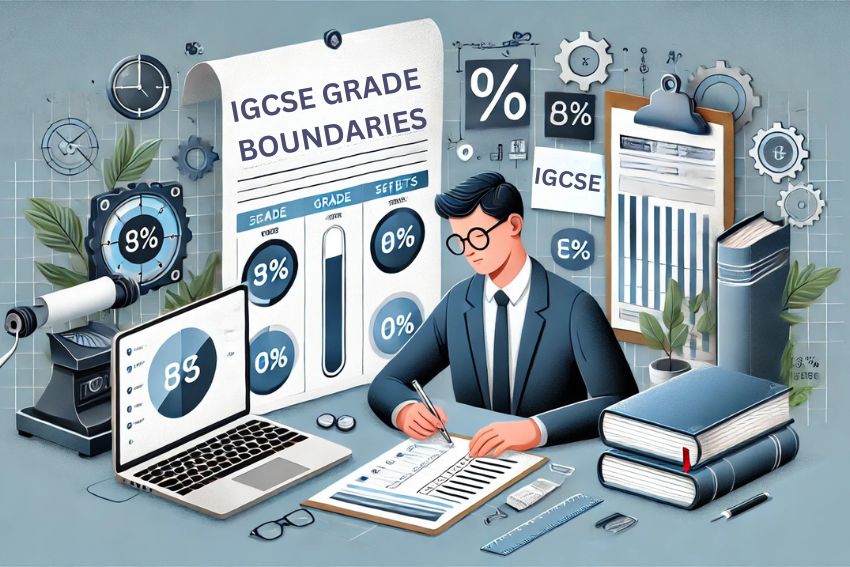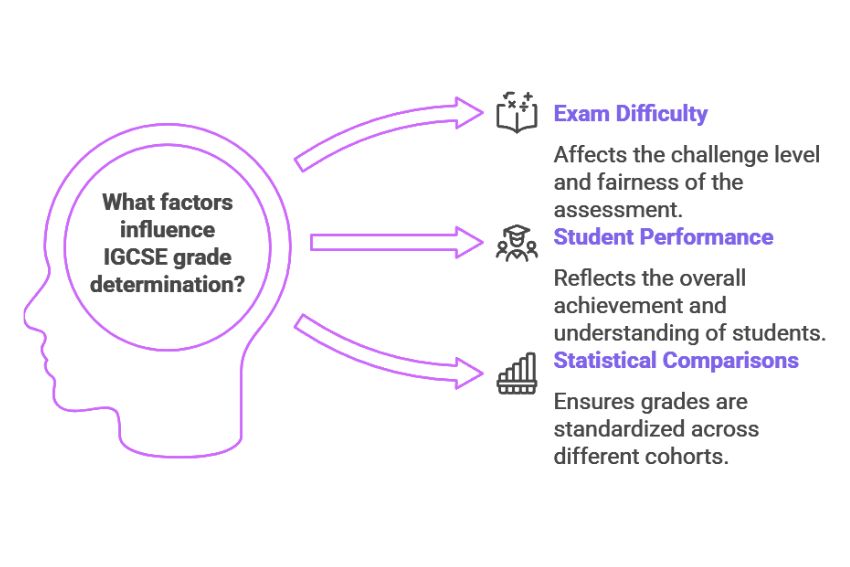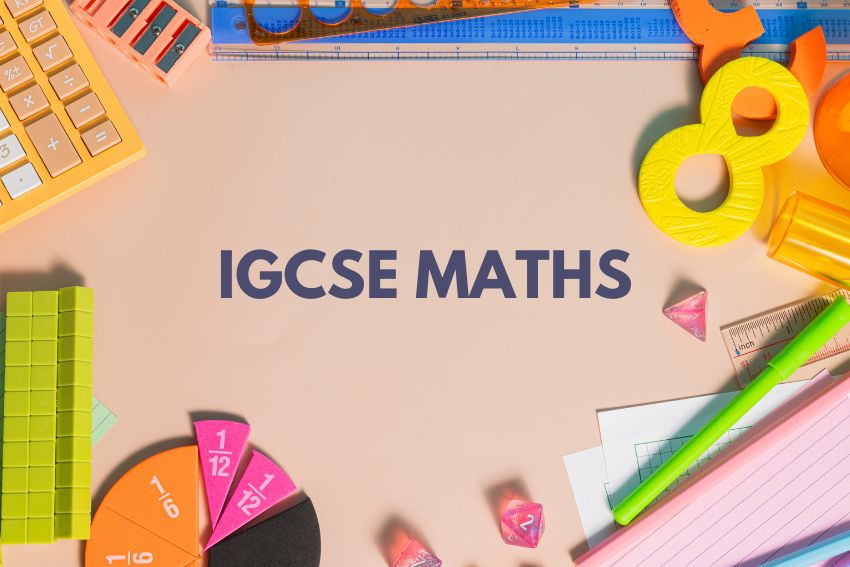IGCSE Grade Boundaries 2025: Everything You Need to Know
IGCSE Grade Boundaries 2025 play a key role in how students’ results are determined. They set the minimum marks needed for each grade, helping students and parents understand how scores are converted into final grades. Since IGCSE stands for International General Certificate of Secondary Education, its grading system ensures fair and accurate assessment for students worldwide.
IGCSE grade boundaries decide which grade a student receives based on their exam performance. These boundaries change every year depending on exam difficulty and student performance. If an exam is particularly challenging, the grade boundary for a higher grade may be lower to ensure fairness. This adjustment helps maintain a balanced grading system.
The purpose of IGCSE grade thresholds is to keep grading fair and consistent. Without them, students’ final grades would rely only on raw scores, which can be affected by exam difficulty or different question styles. Instead, grade boundaries help make sure that students are graded fairly, no matter when they take the exam.
Many parents wonder about the IGCSE grade equivalent and how it compares to other grading systems. The A-G system* has been replaced in many regions with the 9-1 scale, where 9 is the highest grade (equivalent to an A*). Understanding these changes can help students and parents set clear goals for exam success.

IGCSE Grading System Explained: A–G vs 9–1 Scale
The IGCSE grading system helps students and parents understand how exam scores translate into final grades. Since IGCSE stands for International General Certificate of Secondary Education, it follows a structured grading approach to ensure fairness. Over the years, this system has evolved, leading to different grading scales used in various regions.
The traditional A–A-G grading system is still used in some schools and exam boards, but many now follow the 9–1 grading system.
IGCSE Grading System Comparison
| Traditional A–G Grading System | 9–1 Grading System |
| A* - Exceptional Performance (Highest Grade) | 9 - Highest Grade (Equivalent to a high A*) |
| A - Excellent Performance | 8 - Lower A* Equivalent |
| B - Very Good | 7 - Equivalent to an A |
| C - Good (Considered a strong pass) | 6 - Equivalent to a High B |
| D - Satisfactory | 5 - Strong Pass (Low B/High C Equivalent) |
| E - Weak Pass | 4 - Standard Pass (Equivalent to a C) |
| F - Low Pass | 3 - Equivalent to a D/E |
| G - Minimum Pass Mark | 2 - Equivalent to an F |
| U - Ungraded (Fail) | 1 - Equivalent to a G |
To align with GCSE grading in the UK, many IGCSE exam boards introduced the 9–1 grading system. This newer scale provides more distinction between top-performing students.
The main reason for this change was to differentiate top students more clearly. In the IGCSE vs GCSE grades comparison, both now follow a similar structure, making it easier for universities and employers to assess qualifications.
Understanding the IGCSE grade marks helps students set clear goals. Whether using the A–G or 9–1 system, the grading scale ensures that results accurately reflect students’ abilities.

How IGCSE Grade Boundaries Are Determined?
Understanding how IGCSE Grade Boundaries are set can help you make sense of exam results. These boundaries change every year to ensure fair grading. Exam boards consider different factors before deciding the minimum marks needed for each grade. This process helps maintain consistency, so students are assessed fairly based on their performance.
Factors Influencing Grade Boundaries
Several factors affect how IGCSE grades are determined:
- Exam Difficulty – If an exam is more challenging than expected, grade boundaries may be lowered so students are not unfairly disadvantaged.
- Overall Student Performance – Exam boards analyse how all students performed. If most students score higher than expected, grade boundaries may be raised.
- Statistical Comparisons – Previous years’ results help examiners decide fair grade boundaries, ensuring consistency across different exam sessions.
These adjustments help create a balanced grading system, so no student is penalised due to unexpected changes in exam difficulty.
How Do Exam Boards Set Grade Boundaries?
Exam boards follow a standardised process to set IGCSE Edexcel grade boundaries and Cambridge grade boundaries once exams are marked:
- Marking Exams – Examiners assess each paper using a standard mark scheme.
- Reviewing Results – Experts analyse student performance to spot trends and inconsistencies.
- Adjusting Boundaries – Based on data, grade thresholds are adjusted to keep grading fair.
- Final Approval – Once reviewed, grade boundaries are finalised and published with exam results.
Since IGCSE levels follow a structured system, this process ensures reliable and fair results. By adjusting grade boundaries each year, exam boards make sure students receive grades that reflect their abilities.
These adjustments help create a balanced grading system, so no student is penalised due to unexpected changes in exam difficulty.
Since IGCSE levels follow a structured system, this process ensures reliable and fair results. By adjusting grade boundaries each year, exam boards make sure students receive grades that reflect their abilities.
Common Misconceptions About IGCSE Grades
Many students and parents have misconceptions about IGCSE grade boundaries 2025 and how the IGCSE grading system works. Understanding the realities behind grading can help set clear expectations and reduce confusion.
One common myth is that grade boundaries are fixed and remain the same every year. In reality, they change depending on factors such as exam difficulty and overall student performance. A specific percentage does not always guarantee a certain grade because boundaries are adjusted to ensure fairness across different exam sessions.
Another misconception is that IGCSE grades are the same as GCSE grades. While both qualifications follow structured grading systems, they differ in content, assessment styles, and grade boundaries. When comparing IGCSE vs GCSE grades, it’s important to check specific subject requirements, especially if students plan to transition between the two systems. This is particularly relevant when considering hardest GCSE subjects, as difficulty levels can vary between the two qualification systems.
Why Do IGCSE Grade Boundaries Change?
IGCSE grade boundaries 2025 will not be the same as previous years. Exam boards like Cambridge and Edexcel review student performance after each exam session. If a paper is more challenging than expected, grade boundaries may be lowered. If overall performance is high, boundaries may be raised. This ensures that results are fair and accurate, preventing students from being unfairly advantaged or disadvantaged by an unusually easy or difficult paper.
For example, Cambridge IGCSE grades and Edexcel IGCSE grade boundaries 2025 will be set after exam boards analyse student performance data. This flexible approach helps maintain consistency in grading, ensuring that students are assessed based on their knowledge rather than the difficulty of a particular exam.
By understanding these realities, students can focus on effective preparation instead of worrying about unpredictable grade boundaries. Checking official grade boundary tables after results are released can give students a clearer picture of how they performed compared to past years.

Impact of IGCSE Grade Boundaries on Students
IGCSE grade boundaries play a crucial role in determining final grades, affecting students’ academic progress and future opportunities. Understanding how these boundaries work can help students plan their revision effectively and stay focused on their goals.
When students receive their IGCSE results, the grade boundaries decide how their raw marks translate into final grades. Since these boundaries change every year, two students taking the same exam in different years may need slightly different scores to achieve the same grade. This adjustment ensures that no student is unfairly penalised or advantaged by exam difficulty.
For example, if an exam is particularly tough, the grade boundary for a Grade 7 (A equivalent) may be lower than in previous years. This means a student scoring fewer marks than expected might still achieve their target grade. However, if an exam is easier, the boundary may be raised. Checking the official grade boundaries after results are released helps students understand how their performance compares to others in that session.
Strategies for Success
Since grade boundaries change each year, students should aim for the highest marks possible rather than relying on past thresholds. This is especially true when dealing with the complexity of certain topics in more challenging subjects like Physics, Maths, and Chemistry, where even strong students can struggle with advanced content. Here are some strategies to help:
- Use Past Papers – Practising with past exams helps students familiarise themselves with question styles and improve time management. For example, you can check IGCSE Physics past papers as for other subjects.
- Understand Mark Schemes – Reviewing official mark schemes shows how answers are graded and what examiners expect in top-level responses.
- Target Weak Areas – Identifying challenging topics early allows students to improve their understanding before exams.
- Stay Consistent – A steady revision plan is better than last-minute cramming, ensuring better retention and confidence during exams.
By understanding how IGCSE grade boundaries work, students can prepare effectively and avoid unnecessary stress. The goal is to focus on improvement, not just past grade thresholds.
Conclusion
To summarise, IGCSE grade boundaries play an important role in determining final grades, but they are not fixed. They change each year based on exam difficulty and student performance. Instead of focusing on past grade thresholds, students should aim to achieve the highest marks possible through effective preparation. For subjects like Physics, where questions can be especially demanding, working with experienced GCSE Physics tutors can make a big difference in building understanding, boosting confidence, and maximising results.
Using past papers, understanding mark schemes, and targeting weaker areas can make a big difference in exam performance. With a structured revision plan and consistent practice, students can improve their IGCSE grades and feel more confident on exam day.
For extra support, online IGCSE tutors can provide personalised guidance, helping students master difficult topics and refine their exam techniques. Whether preparing for Cambridge IGCSE grades or Edexcel IGCSE grade boundaries, having expert support can make revision more effective.
By staying consistent, using the right study methods, and seeking additional help when needed, students can achieve their best possible results in the IGCSE exams.
FAQs
What are IGCSE grade boundaries?
IGCSE grade boundaries are the minimum marks required to achieve a specific grade in an exam. These boundaries change each year based on exam difficulty and student performance. Exam boards, such as Cambridge International and Pearson Edexcel, set these thresholds to ensure fair and accurate grading.
How are IGCSE grade boundaries determined?
Exam boards set IGCSE grade boundaries by analysing overall student performance, the difficulty level of the exam, and statistical data from previous years. If an exam is harder than expected, the boundaries may be lowered, ensuring students are not unfairly disadvantaged.
Do IGCSE grade boundaries change every year?
Yes, IGCSE grade boundaries change each year. They are adjusted based on how students perform in that exam session. This means a grade 7 in one year might require different marks than in another year.
What is the difference between IGCSE and GCSE grades?
Both IGCSE and GCSE use grading systems such as 9–1 or A–G*, but IGCSE exams often have more flexible assessment options. Unlike GCSEs, which are UK-based, IGCSEs follow an international curriculum, making them suitable for students worldwide.
What is an IGCSE grade equivalent to?
An IGCSE grade is equivalent to a GCSE grade, but grading systems may differ based on the exam board. In the 9–1 grading scale, a 9 is equivalent to an A in the old A*–G system, while a 4 is equivalent to a C.
How can students improve their IGCSE grades?
To improve IGCSE grades, students should use past papers, understand mark schemes, and create a structured revision plan. Online IGCSE tutors can also provide personalised guidance to help students master challenging topics and refine exam techniques.








